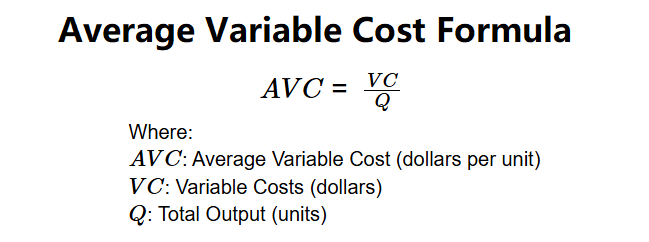 Home
Home
 Back
Back

Definition: This calculator computes the average variable cost (\( AVC \)), which represents the variable cost per unit of output produced, helping businesses understand production efficiency.
Purpose: Assists business owners and managers in analyzing the cost structure of production, optimizing pricing, and improving profitability.
The calculator uses a simple formula to compute the average variable cost:
Formula:
Steps:
Calculating the average variable cost is crucial for:
Example 1: \( VC = \$600,000 \), \( Q = 240 \):
An AVC of $2,500 indicates the variable cost per unit produced.
Example 2: \( VC = \$150,000 \), \( Q = 500 \):
An AVC of $300 reflects a lower per-unit cost due to higher output.
Example 3: \( VC = \$80,000 \), \( Q = 40 \):
An AVC of $2,000 shows higher per-unit costs due to lower output.
Q: What is the average variable cost?
A: The average variable cost (\( AVC \)) is the variable cost per unit of output, calculated by dividing total variable costs (\( VC \)) by total output (\( Q \)).
Q: What are variable costs?
A: Variable costs (\( VC \)) are expenses that vary with production volume, such as labor, materials, and utilities.
Q: Can the AVC be negative?
A: No, since \( VC \) and \( Q \) are non-negative, \( AVC \) is always non-negative.